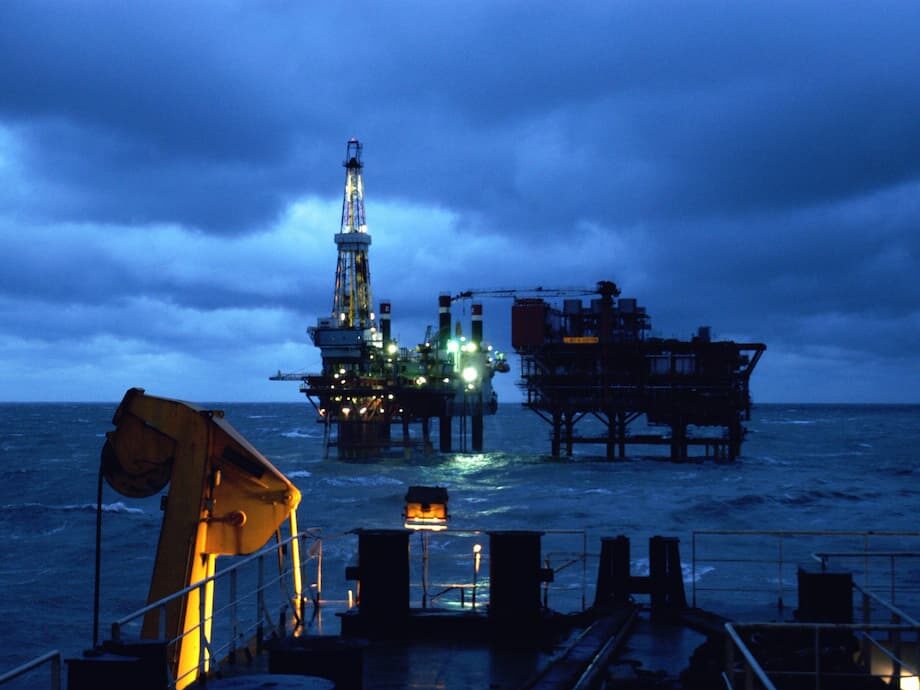What is happening near Pratas
China has positioned oil and gas installations and support vessels inside Taiwan’s exclusive economic zone in the northern South China Sea, close to Pratas, also known as Dongsha. Satellite and maritime tracking over July and August identified at least a dozen assets linked to China National Offshore Oil Corporation operating within the zone Taiwan claims. One structure came within about 50 kilometers of the restricted waters around Pratas, and separate movements in 2024 brought equipment to within roughly one kilometer of the boundary. The activity went largely unreported until a new analysis pieced together positions and timelines from public data and imagery, then international outlets validated many of the locations.
- What is happening near Pratas
- Where the rigs are and what they are doing
- The legal stakes and Taiwan’s limited recourse
- China’s position and the role of CNOOC
- Dual use risk and the military picture around Dongsha
- Energy security is an exposed flank
- Regional echoes from Japan to Vietnam
- What options are on the table for Taipei and partners
- The Bottom Line
The deployments fit what regional security scholars call greyzone tactics, moves that fall short of open combat yet change the status quo. Fixed steel foundations known as jackets support wellhead platforms and can remain at sea for years. At least one vessel in the area measures more than 240 meters in length, with a deck area comparable to one and a half football fields. Several of the wellhead platforms rank among the largest in Asia, underscoring the industrial scale of the operation.
A quiet buildup, now in plain sight
Research from the Jamestown Foundation found that Chinese assets have been present in and around Taiwan’s claimed zone since at least May 2020, typically staging from Daya Bay in Guangdong. Movements accelerated this summer. A semi submersible platform identified as NanHaiErHao, or Nanhai No. 2, pushed deep into the area near Pratas, approaching to roughly 30 miles from the restricted waters line. The buildup appears designed to normalize Chinese presence and industrial activity in a space Taipei says requires prior permission for artificial islands, installations, or structures.
Jamestown’s team, led by analysts who track maritime behavior, warned that silence can carry costs and that patterns from elsewhere show persistence matters.
The failure to protest today risks normalizing sovereignty shaving and encourages further encroachment.
Where the rigs are and what they are doing
The latest open source tallies point to twelve permanent or semi permanent structures inside or near Taiwan’s claimed EEZ around Pratas. They include seven rig structures, three floating production storage and offloading vessels, and two semi submersible platforms. In multiple spots, jackets have been planted on the seabed to anchor future platforms. These are not quick survey visits. They are long dwell assets that can extract, store, or support the handling of hydrocarbons.
Operating rigs inside a neighbor’s zone without consent rejects that neighbor’s jurisdiction. Taiwan’s coast guard says it tracks maritime targets in its surveillance area, yet it also notes that oil exploration and commercial cooperation sit outside its enforcement remit. Specialists say that division of responsibility, and the sheer size of the hardware in question, makes on scene challenges hard to mount.
Bonnie Glaser, managing director of the Indo Pacific program at the German Marshall Fund in Washington, said the absence of a pushback likely reflects capability and bandwidth gaps in Taipei.
My guess is that Taipei lacked capabilities to respond, and that explains why they did not. Perhaps they underestimated how extensive it would be.
The legal stakes and Taiwan’s limited recourse
Exclusive economic zones grant coastal states sovereign rights to explore, exploit, conserve, and manage natural resources in waters up to 200 nautical miles from their baseline under the United Nations Convention on the Law of the Sea (UNCLOS). Other states enjoy freedoms of navigation and overflight, but they may not extract oil or gas from within a coastal state’s zone without consent. The legal picture around Taiwan is complicated by its political status. Taipei is not a party to the UN or to UNCLOS arbitration mechanisms, which reduces access to formal dispute settlement even when behavior appears to breach the convention. Domestic law also leaves gaps over which slices of the zone the government chooses to enforce.
EEZ rights in brief
- A coastal state enjoys exclusive rights to resource exploration and extraction within its EEZ.
- Foreign ships may transit and conduct many peaceful activities, but they need permission to exploit resources.
- UNCLOS provides tools for resolving disputes for signatories, including arbitration.
- Tribunal rulings have rejected expansive maritime claims in the region, including the nine dash line in 2016.
China rejects the 2016 ruling and continues to assert sweeping claims across the South China Sea. Separate frictions are playing out elsewhere. Tokyo recently protested that Beijing set up 21 drilling rigs near the maritime boundary in the East China Sea, raising fears of gas being drawn from the Japanese side. Those disputes highlight how energy infrastructure is increasingly used to press contested claims.
China’s position and the role of CNOOC
CNOOC describes itself as one of the largest independent exploration and production companies, with joint ventures worldwide, including past projects with Taiwan’s state energy firm CPC. It is also state owned and aligned with Beijing’s political priorities. Chinese officials and scholars frame offshore work near Pratas as driven by energy needs and by the defense of what China considers its rights in adjacent waters.
Zhu Feng, a professor at Tsinghua University’s center for international security and strategy, told reporters that the impetus is resource focused, not a bid to rapidly escalate tensions.
China’s oil and gas exploration is primarily driven by its current energy needs and reflects a strong stance in safeguarding its claimed rights and interests in the region.
A decade earlier, CNOOC’s then chairman Wang Yilin used striking language to describe the strategic value of giant platforms. In a 2012 speech reported by business media, he called large rigs “mobile national territory and a strategic weapon.”
mobile national territory and a strategic weapon
In Taipei, the presidential office has accused Beijing of violating international norms by deploying rigs and related structures in waters it claims. The office urged an immediate halt to the activities and said the drills undercut regional stability and the international order established around the law of the sea.
We call on Beijing to immediately stop illegal deployment and exploitation activities in regional economic waters including ours. This behavior violates international legal norms and undermines regional stability.
Dual use risk and the military picture around Dongsha
Energy platforms are not warships, yet they can shape the security environment. Steel jackets and fixed platforms offer anchor points for sensors, communications, and logistics that improve awareness and control of nearby sea and air approaches. Analysts warn the structures could host surface search radar, electro optical and signals collection suites, and acoustic gear. Their helipads can support frequent landings. Small caliber weapons or point air defenses could be added if Beijing chose to harden select sites.
From a military planning perspective, infrastructure of this type can support coercive scenarios. It can help monitor shipping lanes, complicate resupply to outposts like Pratas, and, if tensions spike, serve as staging or resupply points for coast guard and maritime militia. Jamestown’s assessment argues that these benefits come at far lower cost than island building while yielding many of the same jurisdictional and operational effects.
There are precedents for platforms being pulled into conflict. During World War II, Britain built sea forts to defend approaches to the Thames. In the late 1980s, Iran used offshore platforms to support forces during the Tanker War, which in turn prompted U.S. strikes. In Southeast Asia, previous rig deployments by China inside Vietnam’s claimed zone sparked crises. Hanoi’s steady protests and at times aggressive at sea tactics helped force removals. The contrast with Taiwan is that these offshore assets have remained in place for years with limited public challenge.
Energy security is an exposed flank
Taiwan imports nearly all of its fuel and relies heavily on liquefied natural gas for power generation. The island shut its last operating nuclear reactor in May 2025, which increased reliance on gas, coal, and oil. Energy planners must manage a just in time supply chain for LNG, where storage on the island covers weeks rather than months. A recent set of wargames by the Center for Strategic and International Studies suggested that in a blockade scenario Taiwan could exhaust available gas in roughly ten days, with coal stocks lasting about seven weeks and oil around twenty weeks. Modelers warned electricity output could fall to one fifth of pre blockade levels if ships could not dock.
The rig network near Pratas adds a new pressure point. These sites enhance Chinese presence in the approaches to Taiwan’s southwestern sea lanes and could support surveillance and enforcement during a crisis. They also heighten anxiety in energy markets and insurance circles whenever tensions rise, which can raise import costs for Taipei. The longer the structures sit unchallenged, the more they mold expectations about who operates where in contested waters.
Regional echoes from Japan to Vietnam
Japan’s government says China has positioned 21 drilling structures in the East China Sea, despite a decade old joint development framework that remains frozen. Officials in Tokyo worry that Chinese work near the line could draw down gas from reservoirs that extend into Japan’s side. Beijing rejects the criticism and says its drilling takes place in areas under Chinese jurisdiction. Vietnam has condemned Chinese tenders and past rig placements that overlap its claimed waters. Those episodes underscore a pattern in which energy infrastructure doubles as a tool to advance maritime claims.
One through line in the historical record is that persistent, public objection can move the needle. Vietnam protested relentlessly and sometimes mobilized ships to interfere with Chinese rigs, and Beijing withdrew more than once. Analysts now argue that Taiwan and like minded partners could benefit from a coordinated approach built on constant monitoring, rapid transparency, and joint diplomatic statements that treat these deployments as a shared regional challenge.
What options are on the table for Taipei and partners
Policy ideas being aired range from the legal to the operational. Taiwan could issue formal protests and publish evidence packages that document sites with commercial satellite imagery and maritime tracking, including data from all weather sensors. Clarifying which agencies lead on EEZ enforcement would help reduce seams between the coast guard, navy, and energy regulators. Carefully stepped up patrols around Pratas can demonstrate jurisdiction without inviting collisions, while ship riders or joint patrols with regional partners would add weight and visibility.
Diplomatic coordination with Japan, Vietnam, and the Philippines would raise the cost of ignoring concerns. Taipei could also work with friendly capitals to explore targeted restrictions on CNOOC’s access to finance, technology, or port services if rigs remain in place without consent. None of these steps requires abandoning crisis management. They do demand consistency, transparency, and a willingness to treat energy infrastructure as both an economic and a security issue.
Lin Chao lun, an associate research fellow at Taiwan’s Institute for National Defense and Security Research, warned that quiet acceptance carries strategic costs and urged coordinated action.
Without firm countermeasures against drilling near Dongsha, sovereignty will be gradually eroded.
The Bottom Line
- At least 12 CNOOC structures and support ships have been operating inside Taiwan’s claimed EEZ near Pratas, some within 50 kilometers of restricted waters.
- Open source tracking shows several platforms have been in place since 2020, including large wellhead platforms and semi submersible rigs.
- Analysts describe the activity as greyzone pressure that advances Chinese control without open conflict and could support coercive scenarios.
- Taiwan has limited legal recourse through UNCLOS and has struggled to respond at sea, though its presidential office has demanded an immediate halt.
- China says the work reflects energy needs and the defense of claimed rights. A former CNOOC chair called rigs “mobile national territory and a strategic weapon.”
- Japan has lodged protests over 21 Chinese rigs in the East China Sea, and Vietnam has confronted similar moves in its waters.
- Taiwan’s energy vulnerability heightens the stakes, with wargames indicating gas supplies could be exhausted in about ten days under blockade.
- Options include stronger protests, better monitoring and transparency, clearer agency roles, calibrated patrols, and coordination with regional partners.




